Navigating New Zealand’s North Island
From Auckland in the north to Wellington on its southern tip, the North Island offers natural wonders, cultural lessons, and Hobbit habitats
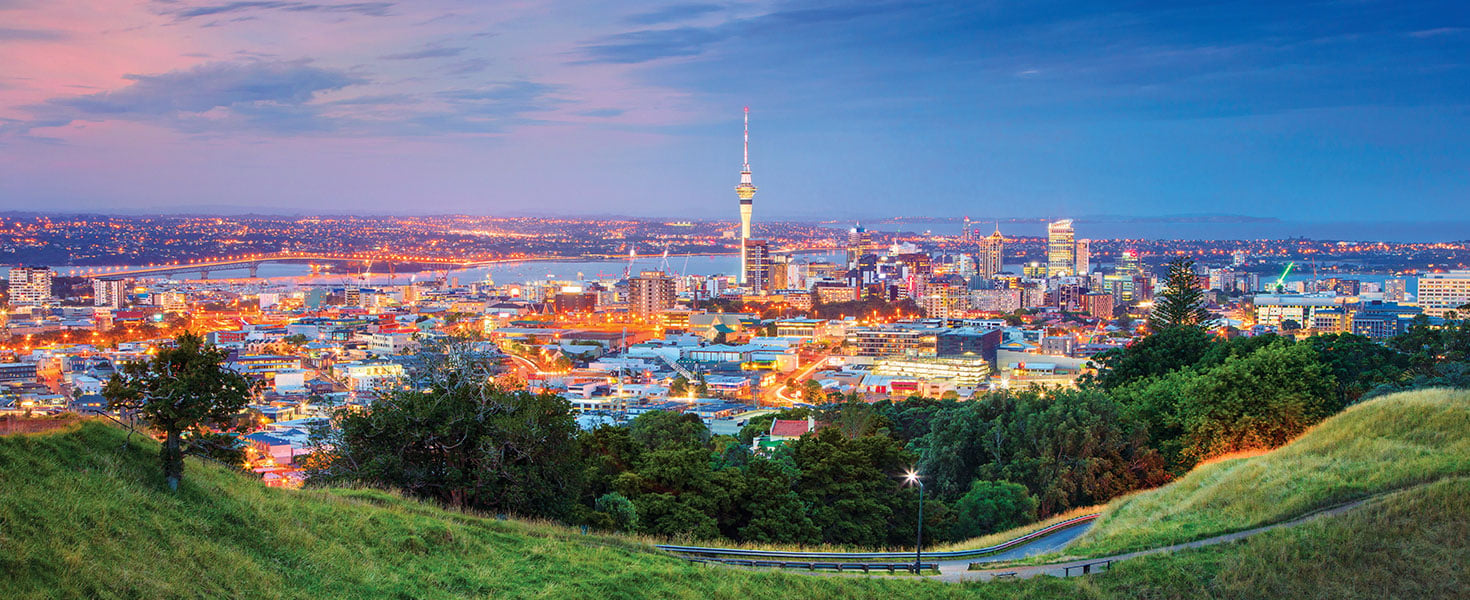
It was a glorious autumn day when I landed in Auckland on New Zealand’s North Island after a 15-hour flight from Dallas. Fueled by the feeling you get from arriving in a new country (as well as a few cups of strong coffee), I headed straight to the suburb of Mount Eden to visit the highest natural point in Auckland: Maungawhau/Mount Eden, the cone of a dormant volcano and one of the ancestral mountains of the Ngāti Whātua Ōrākei tribe. Maungawhau is owned by a collective of 13 Auckland tribes as a result of a 2014 settlement with the government, so who better than Dane Tumahani from the Ngāti Whātua Ōrākei tribe to guide me around this significant site?
Welcoming me with a hongi, the traditional Māori greeting in which you gently press noses to create a spiritual connection, Tumahani led me toward the entrance to the park, where he leaned down and laid his hands on a rock while saying a prayer of thanks for this place. We wove our way between the throng of tourists to Auckland Lookout, where Tumahani told me about the importance of Maungawhau to him and his people and the story of how Auckland came to be.
The Ngāti Whātua Ōrākei are one of four tribes that descended from a common ancestral tribe that migrated here from East Polynesia between 1250 and 1300, and Tumahani explained how Māori people had lived on Maungawhau for hundreds of years. He pointed out where you can see how they modified the landscape to serve their needs, noting, for example, the terraces used for defense, living and working and the pits for crop storage.
My sweeping view of the city and its harbors, together with Tumahani’s stories of the Māori, presaged a meaningful two-week exploration that would take me from here in Auckland to Wellington on the North Island’s southern tip, with plenty of day trips in between.
AUCKLAND AND ENVIRONS
Auckland is the biggest city and the financial center of New Zealand, and as such, the atmosphere can feel a little frenetic with lots of traffic and people. With a large population, however, comes plenty of options for recreation and entertainment. Thrill-seekers should consider bungee jumping from Auckland Harbor Bridge in Westhaven Marina. Popularized by New Zealander AJ Hackett, the adrenaline-inducing activity is also available in the middle of Auckland’s Central Business District from The Sky Tower, New Zealand’s tallest building at just over 1,000 feet.
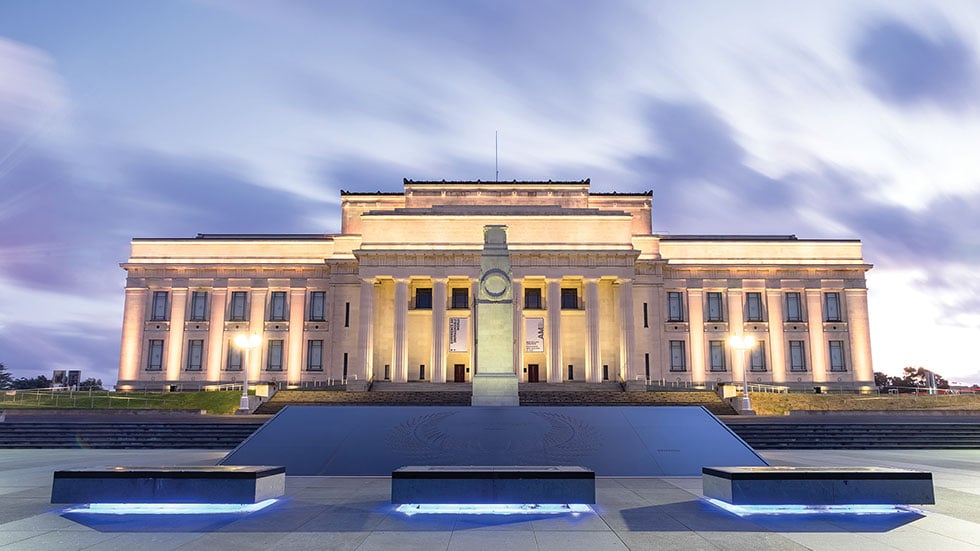 Auckland War Memorial Museum. Photo By Lukasz/Stock.Adobe.Com
Auckland War Memorial Museum. Photo By Lukasz/Stock.Adobe.Com
A popular Auckland attraction is the Auckland War Memorial Museum. Built in 1929 to commemorate Aucklanders who died in battle, the museum has numerous galleries devoted to those who have served in the military as well as others dedicated to the peoples of the Pacific and New Zealand’s natural history. The Origins gallery illuminates the geological origins of New Zealand, while Mātauranga Māori looks at the cultural practices of the Māori.
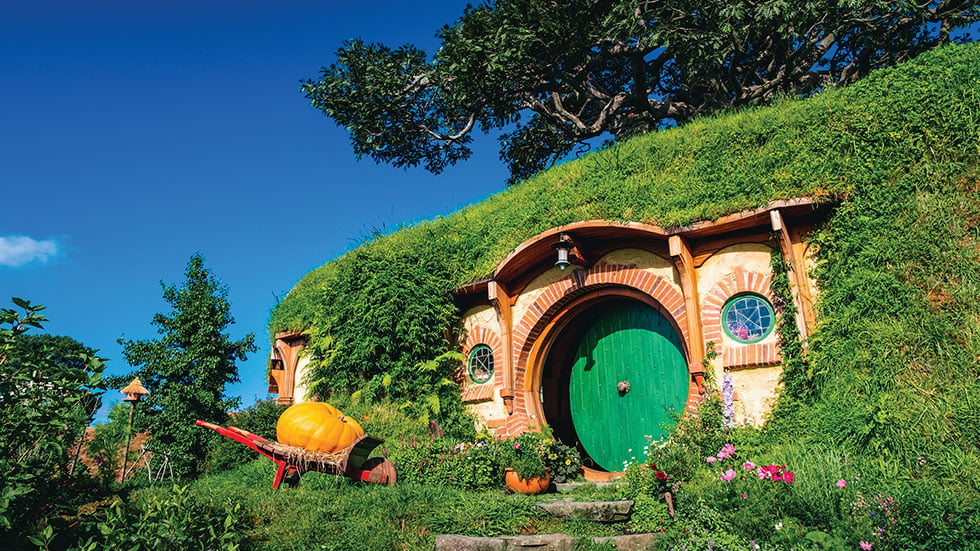 The Hobbiton movie set. Photo by Klanarong Chitmung/Stock.Adobe.com
The Hobbiton movie set. Photo by Klanarong Chitmung/Stock.Adobe.com
New Zealand has long leaned into its distinction as the filming location of both The Lord of the Rings (LOTR) and The Hobbit franchises. During the lead-in to the premiere of The Hobbit movie, for example, Wellington was ceremonially renamed the Middle of Middle-earth. While not strictly LOTR- or Hobbit-themed, the tour Wētā Workshop Unleashed showcases how the special effects and prop components of films are created, from concept to production. Wētā Workshop was used extensively by New Zealand film director Peter Jackson for the aforementioned film trilogies for producing sets, costumes, armor, weapons, creatures and miniatures.
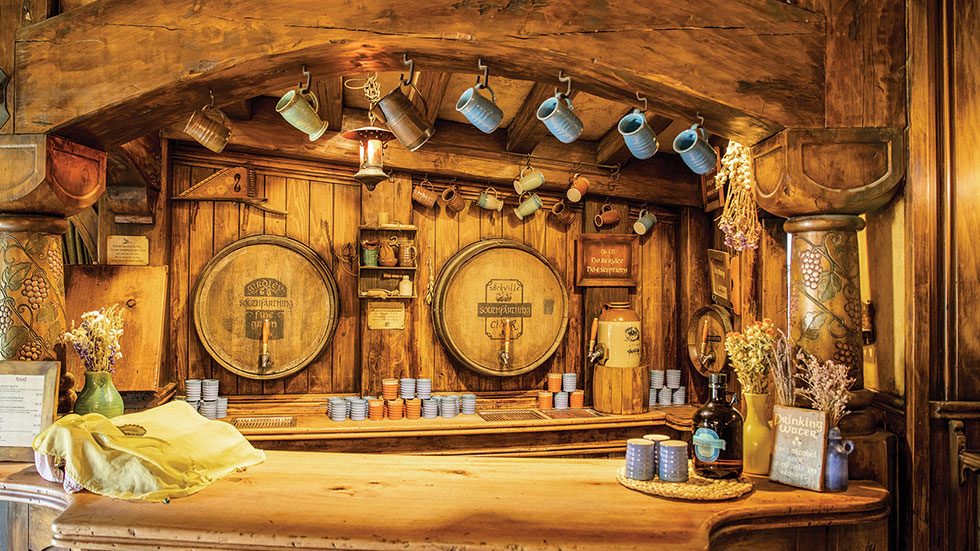 The Green Dragon Inn. Photo courtesy of Tourism New Zealand
The Green Dragon Inn. Photo courtesy of Tourism New Zealand
To see the work of the Wētā Workshop in the flesh, so to speak, book a tour to the Waikato region, a two-hour drive from Auckland, to visit what is now referred to as Hobbiton. This is where the shire from The Lord of the Rings and The Hobbit movies was brought to life. Here, I felt like a kid again as I joined a guided tour around what is essentially a huge open-air movie set. I wandered through the purpose-built bucolic village, marveling at the intricate hobbit holes with their incredible attention to detail while our guide told anecdotes from the filming of the movies. A pint of ale at the Green Dragon Inn capped off the tour perfectly.
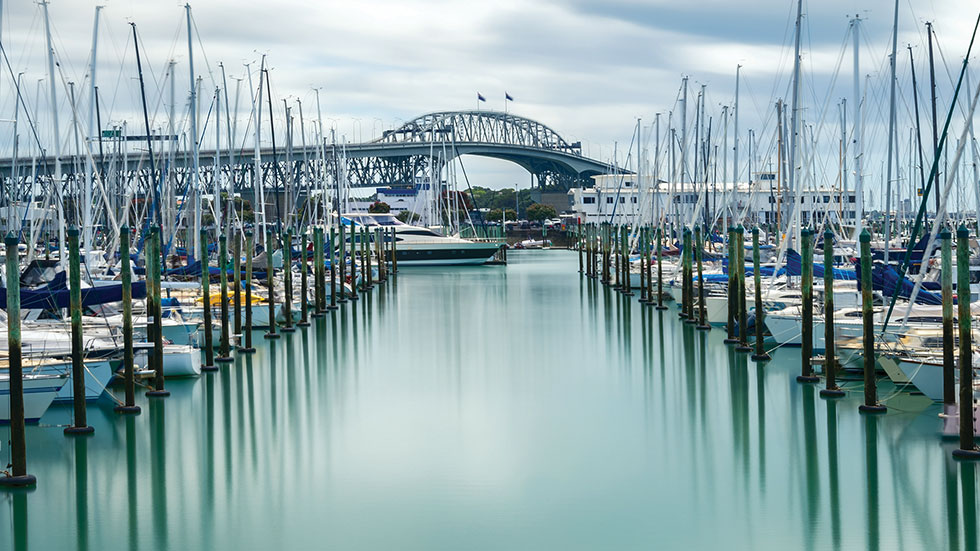 Marina fronting Auckland Harbor Bridge. Photo by Summit Art Creations/Stock.Adobe.com
Marina fronting Auckland Harbor Bridge. Photo by Summit Art Creations/Stock.Adobe.com
THE BAY OF PLENTY
From Auckland or as an excursion from the cruise port in Tauranga, you can visit Rotorua and Te Puia, the site of dramatic geysers and bubbling mud as well as the location of a multifaceted experience that aims to preserve the heritage of the Māori people. I spent a few hours there, visiting the New Zealand Māori Arts and Crafts Institute, where traditional wood carving, stone and bone carving, and weaving are practiced, and the Kiwi Conservation Center, where you can see New Zealand’s national bird. Of course, I also took in the amazing natural scenery that is part of Te Whakarewarewa geothermal valley. At its center is the impressive Pōhutu Geyser—the largest in the Southern Hemisphere—which erupts to a height of nearly 100 feet more than 15 times a day. A selfie with the erupting geyser in the background is all but mandatory.
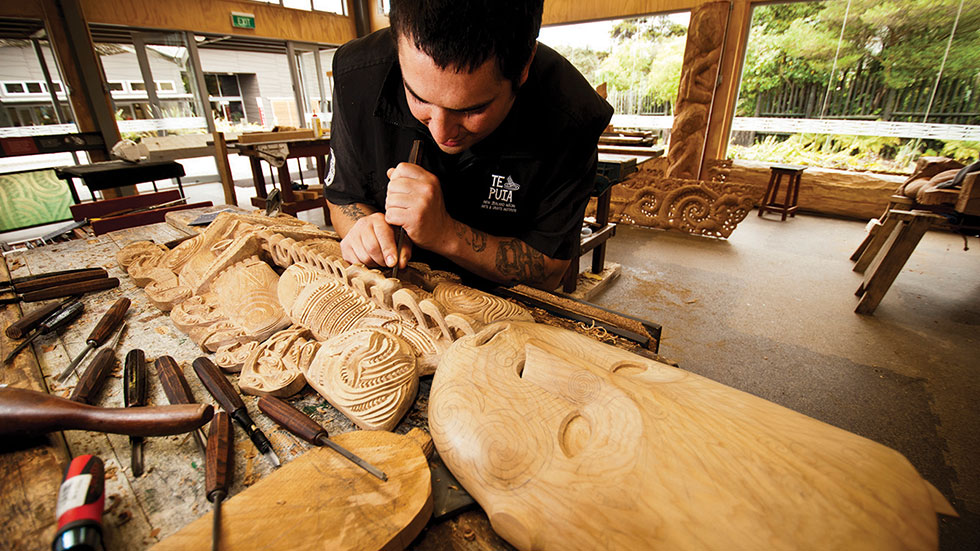
A carver at work at the New Zealand Māori Arts and Crafts Institute. Phot courtesy if Tourism New Zealand
To amp up my day of culture, I headed across Rotorua to Te Pa Tu. A more hands-on experience than Te Puia, Te Pa Tu is a re-created Māori village where guests are encouraged to participate in traditional games and cultural experiences. As a rugby fan, I was thrilled to be part of a haka, the ceremonial dance made famous around the world by the All Blacks, New Zealand’s rugby team. The experience also includes a Māori dance and music performance and a seasonal multicourse dinner.
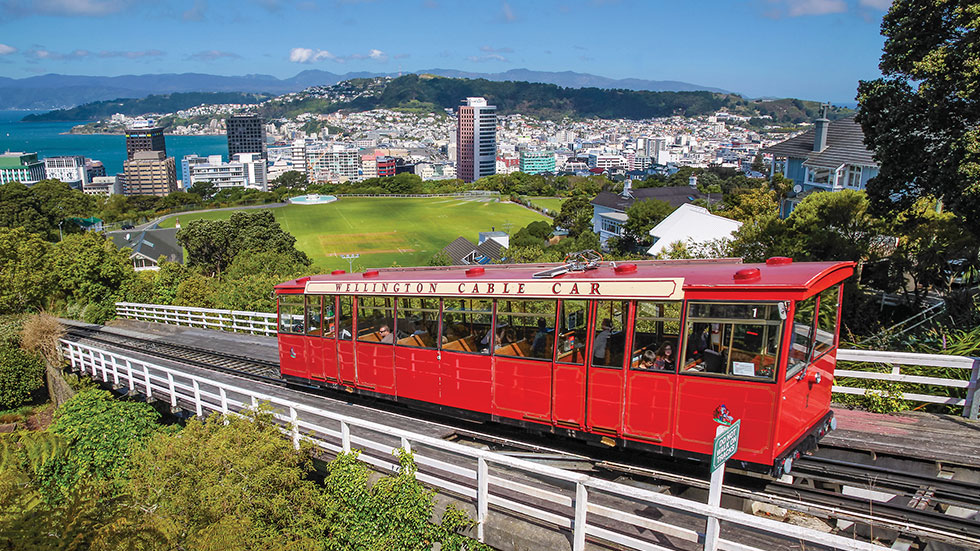
The Wellington Cable Car whisks visitors up a hillside for a sweeping view of the city. Photo by Cmfotoworks/Stock.Adobe.com
WELLINGTON AND BEYOND
Wellington is significantly smaller than Auckland, and although it is the capital, it has a more relaxed vibe. One of the must-see places I visited in the city was Zealandia Te Māra a Tāne. The world’s first fully-fenced urban ecosanctuary, the 556-acre conservation site, which sits a few miles from downtown, boasts more than 40 native bird species, dozens of reptile species and hundreds of plant species. Guided daytime and nighttime tours are available, or you can explore on your own the verdant valley’s 20 miles of trails where wildlife roams free among the regenerating forest.
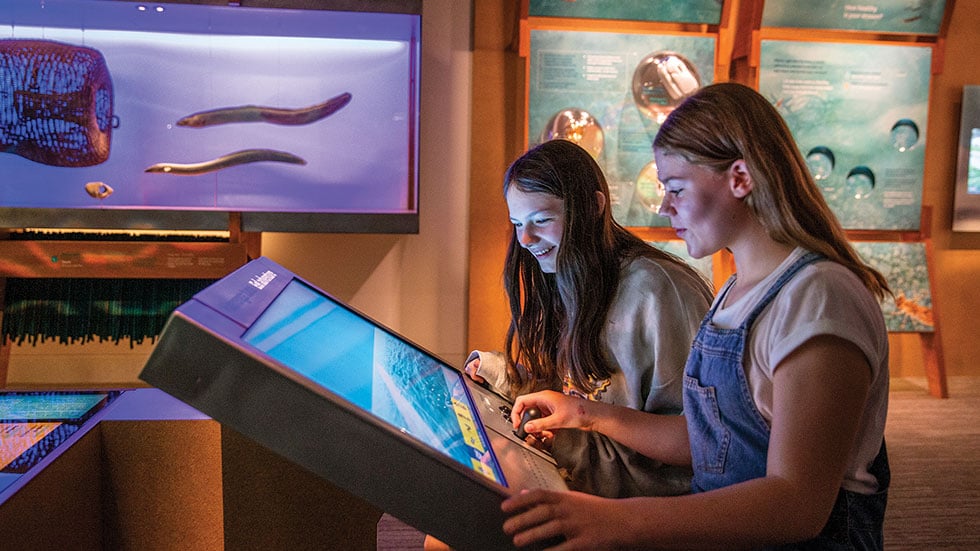 Museum of New Zealand Te Papa Tongarewa. Photo courtesy Of Tourism New Zealand
Museum of New Zealand Te Papa Tongarewa. Photo courtesy Of Tourism New Zealand
A few miles across Wellington is the free Museum of New Zealand Te Papa Tongarewa. As New Zealand’s national museum, it is committed to telling the story of New Zealand through a bicultural lens through permanent displays, such as the national art collection and exhibitions on celestial navigation and volcanic landscapes, as well as a host of temporary exhibitions. I was blown away by Gallipoli: The Scale of Our War, an exhibition (through April 24, 2025) that brings together the world of museums with the amazing workmanship of Wētā Workshop to recount the harrowing eight-month Gallipoli campaign of the First World War through the experiences of eight New Zealanders represented by remarkable sculptures more than two times human size.
Something that should be on everyone’s to-do list is a trip on the Wellington Cable Car. The five-minute trip takes you from the city center up a terraced hillside to a lookout offering panoramic views of the capital.
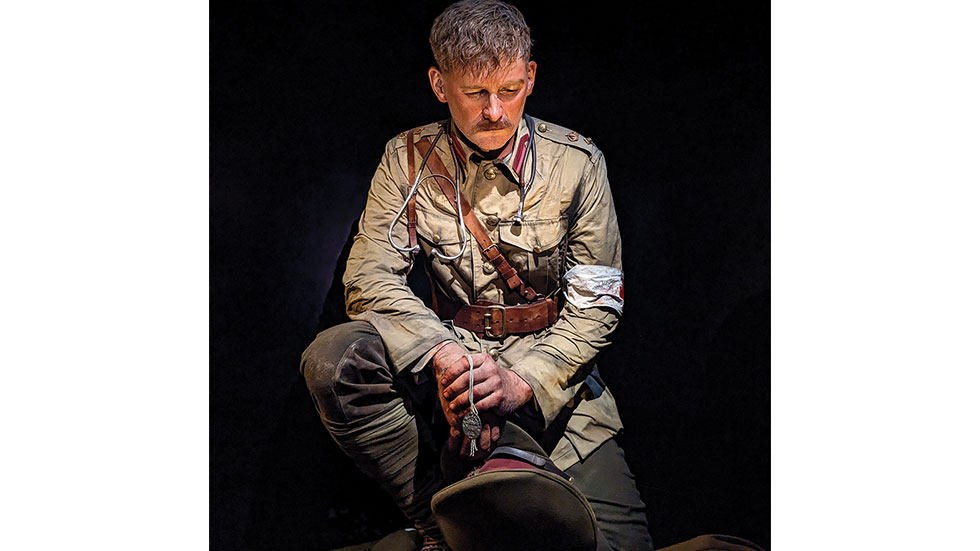
Scene from Gallipoli: The Scale of Our War exhibition. Photo by Rob Mcgovern
For more great views, a 30-mile drive and a short ferry ride puts you on Kapiti Island, where most of the 4,856 acres form a nature reserve. The 32 acres around Waiorua Bay are owned by the Barrett whānau (a Māori word that means “extended family group”). The tour I took was led by Manaaki Barrett (of the aforementioned whānau), who seemed to know every bird, plant, insect and rock on the island.
New Zealand is known around the world for its wine, and although there are other regions in the country that have more name recognition, the Wairarapa Wine Region is close enough to Wellington that it’s popular for weekend escapes. Wairarapa comprises three subregions: Masterson, Gladstone and Martinborough. Although the region was initially built around pinot noir, these days it also produces sauvignon blanc, syrah and chardonnay.
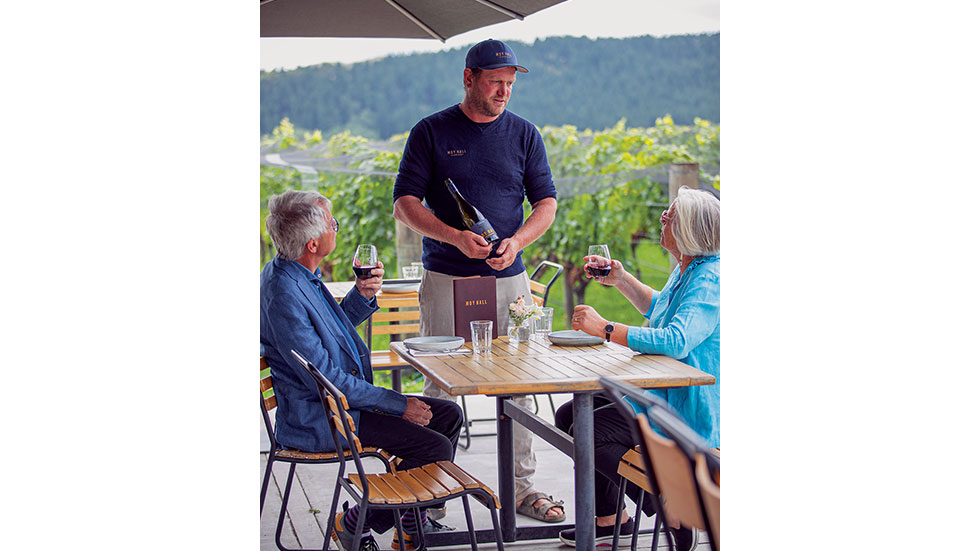 Moy Hall Martinborough 19. Photo by Capture Studios
Moy Hall Martinborough 19. Photo by Capture Studios
I concentrated my visit around Martinborough, dubbed a wine village thanks to its almost two dozen wineries. I rented a bicycle from a local outfitter and pedaled just over five miles to Big Sky Wines and then slowly made my way back to the village via the excellent Moy Hall vineyard. (Be sure to stop at its Scottish longhouse for small plates like slow-cooked pork belly and Spanish sherry-braised lamb.) Close to Martinborough Village, I stopped at Ata Rangi, which, founded in 1980, is one of the oldest wineries in the region, before ending my self-guided tour at Grava winery with a refreshing glass of chilled riesling.
That evening, my last in New Zealand, I joined Hari, an astrobiologist, and Sam, a former New Zealand Air Force pilot, who guided me through the Southern Hemisphere’s night sky as part of their star safari in the newly minted Wairarapa Dark Sky Reserve, one of just 22 places worldwide to receive the designation. Less than 10 miles from Martinborough and just under 60 miles from Wellington, the Star Safari Observatory is perched atop a hill in the midst of the reserve. Peering deep into the cosmos and seeing millions of stars through impressive telescopes is mind-blowing.
Hundreds of years ago, the Māori used the stars to navigate from East Polynesia to the land they called Aotearoa. So, it seemed fitting that as I brought my adventures in New Zealand to an end, I was staring up at those same glittering stars.
